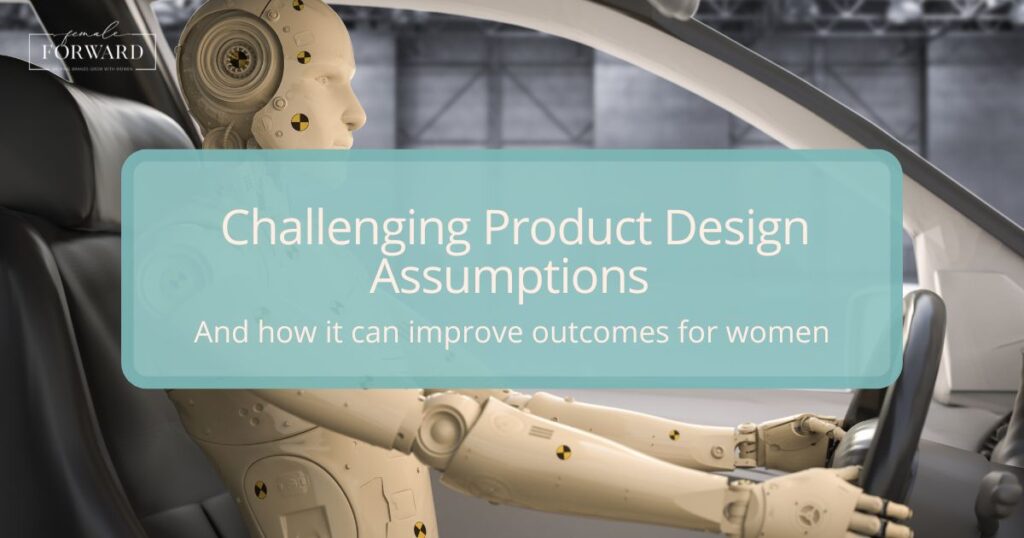
Challenging Product Design Assumptions
And how it can improve outcomes for women
We recently posted a story on our Facebook page about how crash test dummies have been modeled after the average man for over 50 years. This testing design has led to seatbelts and other safety measures in vehicles that are statistically less safe for women than for men. Watch the full video by the World Economic Forum. The great news is that a team of researchers in Sweden, led by Astrid Linder, has challenged the long-held design and come up with a solution that will improve safety for women.
There are opportunities like this one all around us. Improving solutions for women doesn’t just have to mean safety. It could mean making a situation more enjoyable for women or changing the way you speak to women to capture their attention. Sometimes all you need is a bit of courage to ask the right questions.
Here are some questions you can ask of your product or service to improve outcomes for women – and also improve outcomes for your marketing efforts and business growth
- Is the product or service intended for use by all genders? Can it be used by all genders?
- Is our product designed for one gender and then retrofitted for another?
- Do we have a ‘male’ and ‘female’ version of the same product? If so, should we have 2 versions, or can we speak to all people respectfully with the same version?
- How was this product tested? Are there any gendered aspects of the testing? What is the demographic mix of the test groups? What is the demographic mix of the testers?
- Is our industry/company/product/service dominated by males? How can we bring gender diversity into the process (research, design, development, testing, marketing)?
- Is our female audience (or client base, or employee base) growing? If so, are we changing the way we work to be inclusive of the growing demographic?
Women make a large majority of the purchasing decisions in the home – from home purchases and automobiles to healthcare and consumer goods. However, product design in too many cases is still focused on men.
Another example is in the athletic and sports footwear industry. Ida Sports, started by Laura Youngson, is a female sports footwear brand. In an industry dominated by men (both on the field and off), she knew she needed to break the mold. By focusing on female foot anatomy, rather than “unisex”, she has made footwear more comfortable, functional, and safer for female athletes.
When the trend is to “Shrink it and pink it” in product design, it’s a wake-up call to challenge the norm. Women are anatomically, physiologically, and motivationally different from men. This means there is a mountain of opportunity to improve the outcome for women.
And it could be just the catalyst for growth and change that your business needs! Does your company need a brand positioning workshop or brand-building training session? I’d love to be a part of your brand story, check out my services and send me a message today!
